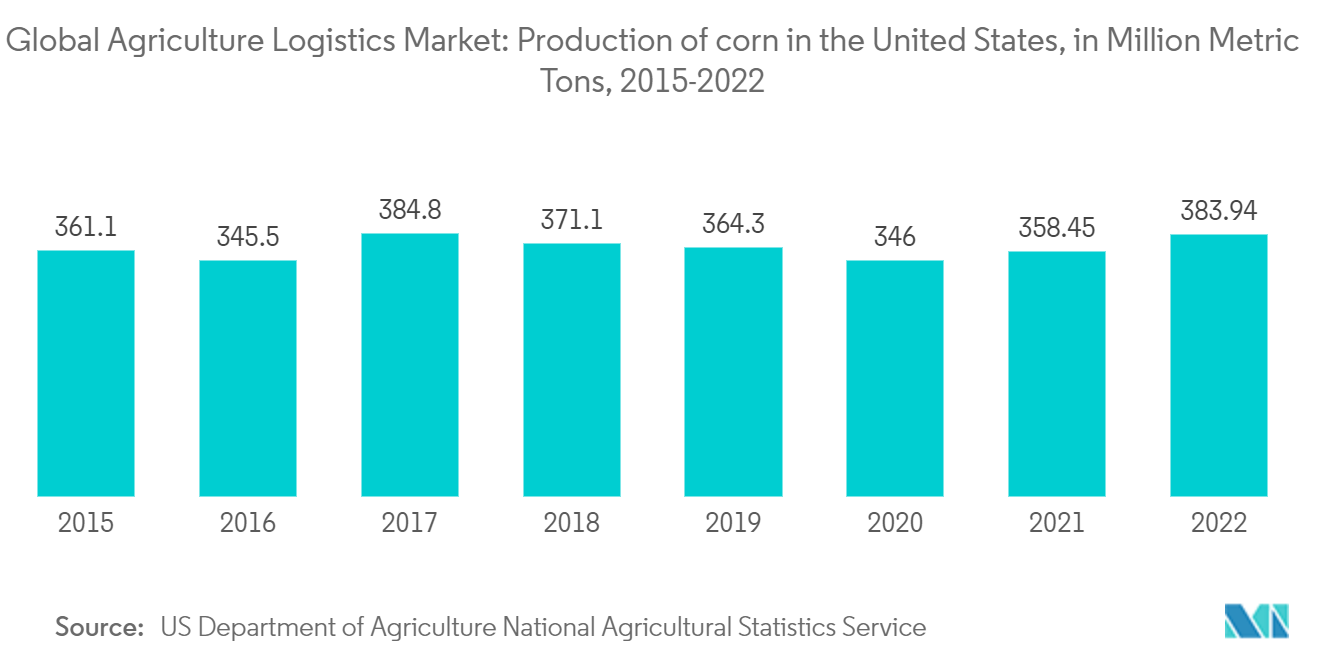Market Trends of Agriculture Logistics Industry
This section covers the major market trends shaping the Agriculture Logistics Market according to our research experts:
Increasing Importance of Logistics Management in the U.S.’s Largest Crop Production
Corn, the most widely produced crop in the U.S., relies heavily on logistics management to ensure farmers receive the necessary resources to feed the world. But due to various planting seasons, corn is grown in different parts of the world, with a portion of the harvest stored or exported to other countries.
Corn seed in the U.S. is grown from May through November. When harvested, a portion of the yield is used for human and animal consumption while another portion is stored or exported. Stored seeds will be kept for planting in the next viable season in the U.S., while a certain amount is exported to other parts of the world to be planted, so the supply of agricultural seeds is perpetuated. When winter season comes in the U.S., corn is planted in the southern hemisphere, where the season is summer. Just as the U.S. handles corn seeds, countries in the southern hemisphere will dedicate a part for consumption and another part for planting in the next viable season or export it back to the U.S. to be planted.
Effective logistics management is essential for corn production since the crop is one of the major contributors to feeding livestock and manufacturing industrial products, food, beverages, etc. Corn also plays a significant role in combating the rising price of petroleum since it is a major component of ethanol, a viable alternative to petroleum. Corn was America's largest grown crop in 2019, with the U.S. farmers planting 91.7 million acres of corn.

Growing Cold Storage and Refrigerated Warehouses Market Worldwide for Agriculture Sector
With increasing Fast-Moving Consumer Goods (FMCG) and Agro sales in the current scenario, the need for cold storage warehouses has been rapidly increasing. Several warehouses comprising cold chain systems are usually designed to ensure the ideal storage and transportation conditions for temperature-sensitive products. The global cold chain logistics market was worth almost 160 billion U.S. dollars in 2018 and is expected to exceed USD 500 billion by 2025. Cold chain logistics involves the transportation of temperature-controlled products along a supply chain using refrigerated packaging solutions to preserve the quality of products such as fresh agricultural goods, seafood, frozen food, or pharmaceutical products. Multiple export industries are dependent on the vital links that cold chain solutions provider. Businesses invest millions of dollars in their cold chain operations to create effective, efficient, and reliable processes, as end-to-end cold chain security is the weak link in the system. A single breakdown in the cold chain logistics chain can lead to catastrophic losses of products and capital. Globally, the number of refrigerated warehouses is increasing owing to a surge in demand for agriculture and pharmaceutical products, which in turn is boosting the Asia-Pacific cold chain logistics statistics. The total capacity of refrigerated warehouses worldwide amounted to 616 million cubic meters in that year and has grown since. In 2020, the United States had the largest capacity of refrigerated warehousing in the world, with 156 million cubic meters. The total capacity of refrigerated warehouses worldwide amounted to 719 million cubic meters in that year.


